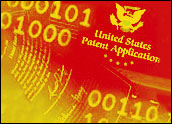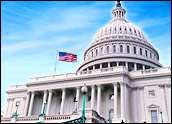
Ottawa, Canada-based Wi-Lan has filed two separate infringement suits against 22 chip suppliers, equipment vendors and electronics retailers. The targeted companies include Acer, Apple, Atheros, Belkin, Best Buy, Broadcom, Buffalo Technology, Circuit City, Dell, D-Link, Gateway, Hewlett-Packard, Infineon, Intel, Lenovo, Marvell Semiconductor, Netgear, Sony, Texas Instruments, Toshiba, Westell Technologies and 2Wire.
Wi-Lan is alleging that the companies have infringed on three of its patents that are related to WiFi and to power consumption in DSL products.
A Familiar Venue
The company sued so many companies because it was concerned it might be forced into other court venues through declaratory-judgement actions, Wi-Lan CEO Jim Skippen said in a conference call.
Its venue of choice, not surprisingly to patent attorneys, was the Court of the Eastern District of Texas, where the suits were filed.
Patent infringement plaintiffs have flocked to the Court of the Eastern District of Texas in recent years because of the administrative changes it has enacted to streamline the legal process prior to trial, as well as the perception that the district tends to favor plaintiffs in these cases.
Indeed, before these changes were enacted in the Texas court, it would have been highly unlikely for a company like Wi-Lan to sue so many companies at once, said James J. Foster, litigator and shareholder at Wolf Greenfield.
Under the procedures enacted by the court, defendants are required to work more collaboratively, which — whether intended or not — has resulted in a smoother path for the plaintiff. It also is nearly impossible for a defendant to successfully move a case to another venue once it has been filed in the Eastern District of Texas, he told the E-Commerce Times.
“A defendant based in Seattle, for example, might argue it is more convenient to move the case up there. But the court’s attitude is that if a company is selling a product nationwide it should be ready to defend the suit nationwide.”
Some Downside, but Not Much
Wi-Lan’s legal strategy is not all upside, Steve Rubin, counsel in WolfBlock’s Intellectual Property/Information Technology Practice Group told the E-Commerce Times.
“The defendants can gang up on the plaintiff and use their considerable combined resources to overpower and over-lawyer the plaintiff. Similarly, there is the risk of patent infringement counterclaims from multiple parties,” Rubin said.
Still, those risks are usually outweighed by the benefits, he said.
“The parties will likely not be able to coordinate on everything and will trip over each other on court rulings.” Meanwhile, the one plaintiff will present a single unified front on important issues like claim construction and the defendants either won’t be able to voice their concerns or will send multiple conflicting positions to the judge, he said.
Also, with multiple defendants, there’s a better chance one will settle, supporting the validity of the patent and establishing royalty rates, he continued. “If one defendant is indemnifying the others, his legal fees are multiplied.”
Finally, discovery is better for the plaintiff because all the important parties are in the case and under the court’s authority, he said.














































Social Media
See all Social Media